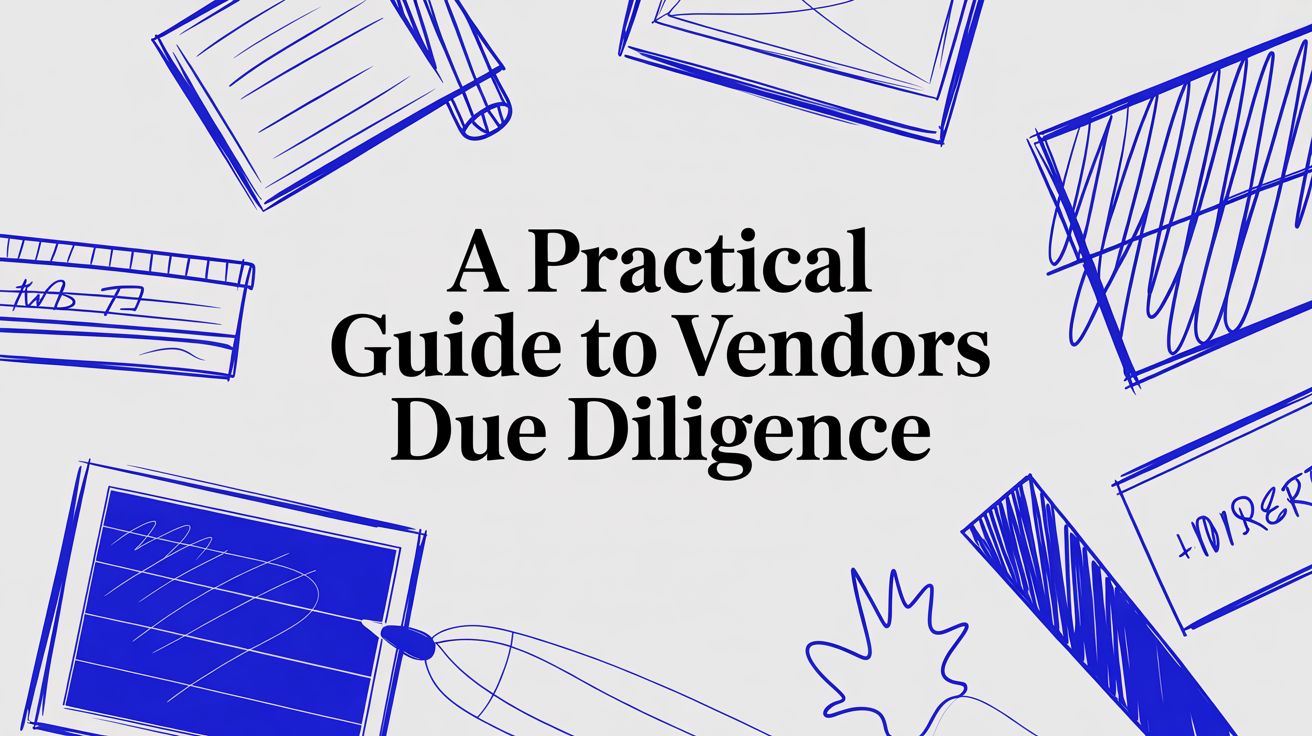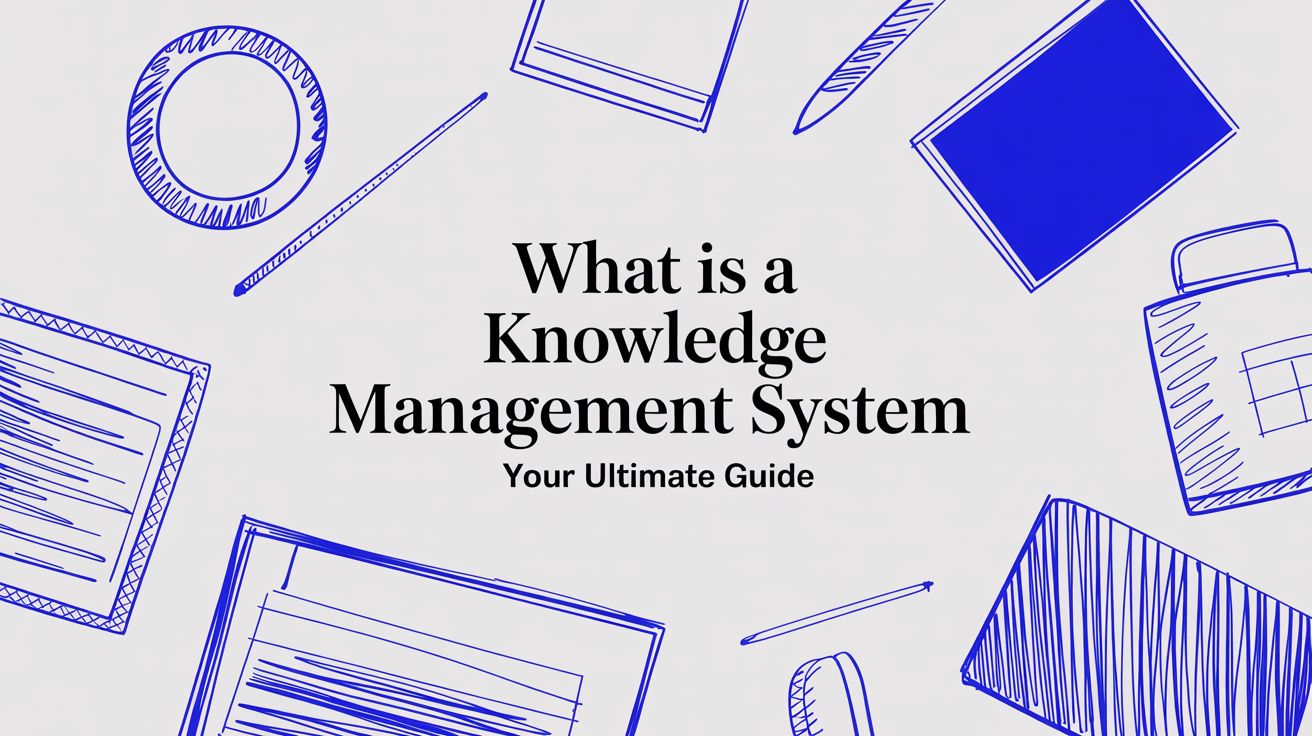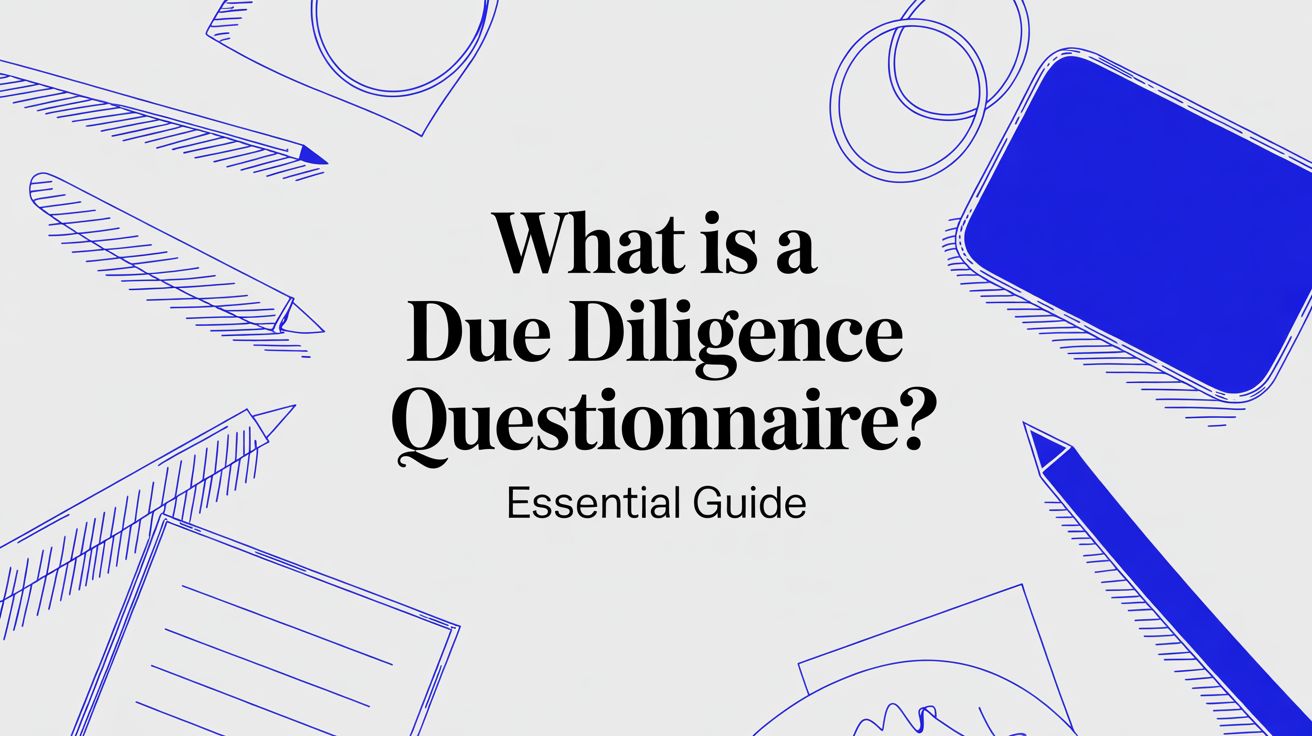· Jane Iamias · information security policy examples · 24 min read
10 Essential Information Security Policy Examples for 2025
Discover 10 actionable information security policy examples, from Access Control to Remote Work. Get sample clauses, customisation tips, and framework mapping.
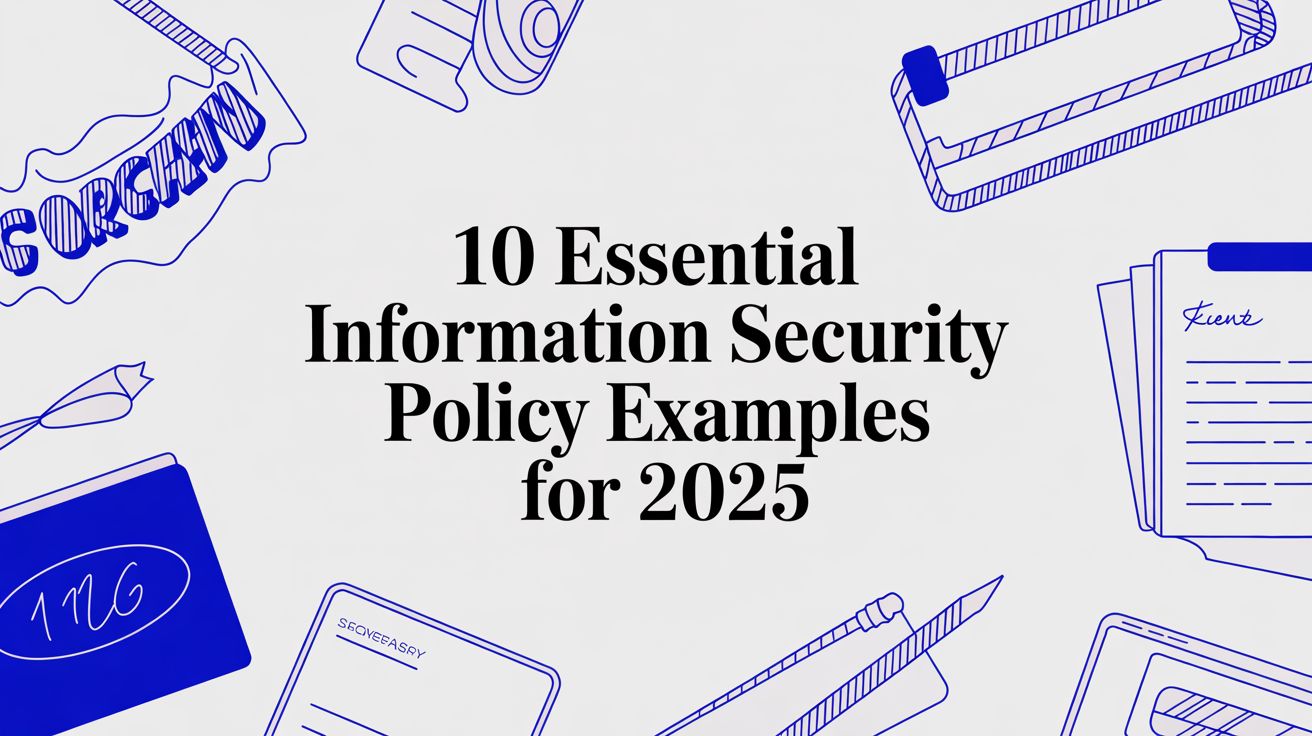
Information security policies are the strategic bedrock of your organisation’s defence, not just compliance checkboxes. A well-crafted policy framework mitigates risk, satisfies auditors, and empowers employees to make secure decisions daily. Conversely, outdated, generic, or poorly communicated policies can introduce vulnerabilities and create more problems than they solve, leaving your organisation exposed. This guide is designed to move your policies from a dusty binder to a dynamic, operational asset that actively strengthens your security posture.
We will provide 10 essential information security policy examples, breaking down each one with actionable clauses, customisation advice, and strategic insights. You will find practical guidance on building a robust security programme, from managing data classification and access control to defining incident response and acceptable use. We’ll explore policies crucial for the modern workforce, including remote work, bring-your-own-device (BYOD), and vendor security management.
Crucially, this article goes beyond mere templates. We will demonstrate how to map these examples to common control frameworks like the NIST Cybersecurity Framework and ISO 27001, a vital step for streamlining compliance and customer due diligence. Furthermore, we’ll show you how to centralise this critical information into a knowledge base, such as ResponseHub, to accelerate security questionnaire responses and ensure your documentation remains accurate and evergreen. This approach transforms static documents into a powerful tool for your sales, security, and compliance teams.
1. Data Classification Policy
A Data Classification Policy is a foundational document in any robust security framework. It provides a systematic approach to categorising organisational data based on its sensitivity, value, and criticality. This structure dictates the appropriate security controls for handling, storing, transmitting, and disposing of information, ensuring that protection efforts are proportional to the data’s importance. Without it, organisations risk either over-protecting trivial data or, more dangerously, under-protecting their most critical assets.
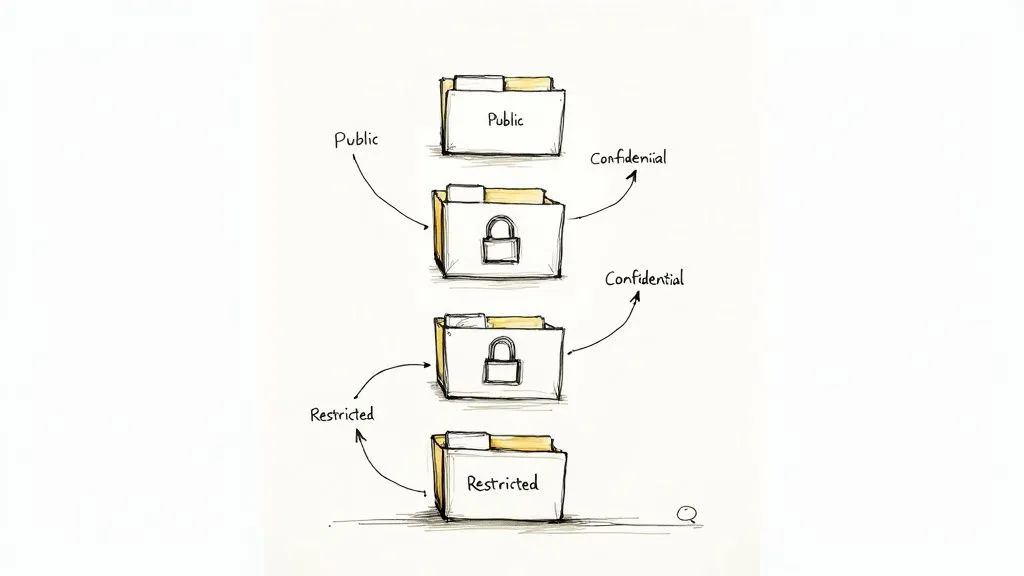
This policy acts as the cornerstone for many other security initiatives, including access control, data loss prevention (DLP), and incident response. For example, a financial services firm would classify customer financial records as “Restricted,” mandating strong encryption and strict access controls, while classifying public marketing materials as “Public,” which requires minimal protection. This is one of the most vital information security policy examples because it directly enables risk-based security.
Sample Policy Clauses
- 4.1 Data Classification Levels: All company data shall be classified into one of four levels: Public, Internal, Confidential, or Restricted. Data owners are responsible for assigning the appropriate classification to data under their purview.
- 4.2 Handling Requirements: Restricted data must be encrypted both at rest and in transit. Access to this data is granted on a strict need-to-know basis and requires multi-factor authentication.
- 4.3 Labelling: All electronic documents and storage media containing Confidential or Restricted data must be clearly labelled with their classification level.
Customisation and Implementation Tips
To effectively implement this policy, start with a simple, manageable number of classification levels. Involve department heads in the classification process, as they have the best understanding of their data’s context and sensitivity. Regular employee training is crucial to ensure everyone understands their responsibilities. Consider using automated DLP tools to identify and classify data, and conduct quarterly audits to verify compliance and adjust classifications as needed.
Mapping to Security Frameworks
- NIST CSF: PR.DS-1 (Data is protected from unauthorised access and use)
- ISO 27001: A.8.2.1 (Classification of information)
- SOC 2: CC6.1 (Logical and Physical Access Controls)
2. Access Control Policy
An Access Control Policy is a critical component of an organisation’s security posture, defining the rules and procedures for granting, managing, and revoking access to information systems and data. Its core purpose is to enforce the principle of least privilege (PoLP), a fundamental concept ensuring that users are only given the minimum levels of access, or permissions, needed to perform their job functions. This prevents unauthorised access and limits potential damage from a compromised account or insider threat.
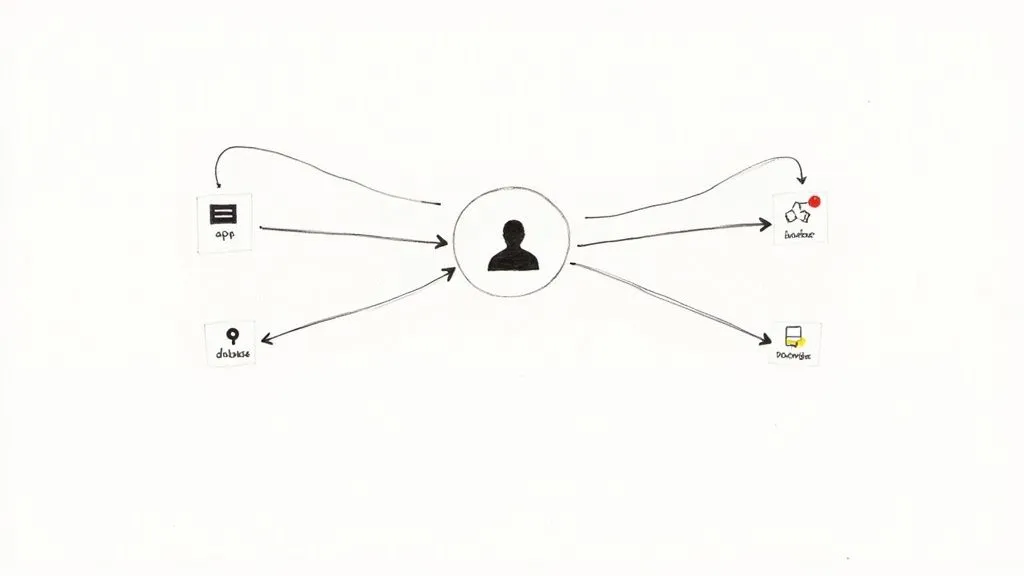
This policy governs who can access what, under which circumstances, and why. For instance, a bank would use access controls to ensure tellers can process customer transactions but cannot approve large loans, a privilege reserved for managers. Modern identity platforms like Microsoft Azure AD or Okta are used to enforce these rules dynamically through conditional access and role-based permissions. As one of the most essential information security policy examples, it directly translates security strategy into operational reality.
Sample Policy Clauses
- 5.1 Principle of Least Privilege: All user access rights shall be granted based on the principle of least privilege. Access to systems, data, and applications will be limited strictly to what is required for an individual’s specific job role and responsibilities.
- 5.2 Access Reviews: User access rights shall be reviewed on a quarterly basis by the relevant data or system owner to ensure they remain appropriate. Any access no longer required must be revoked within 24 hours of identification.
- 5.3 Privileged Access Management: Access to administrative or privileged accounts requires multi-factor authentication (MFA) and must be logged and monitored. All privileged sessions will be time-limited and require explicit approval for use.
Customisation and Implementation Tips
Begin by conducting a thorough role-mapping exercise to define the access requirements for each job function in your organisation. Enforce MFA for all privileged accounts and any remote access to sensitive systems. Schedule and automate regular access reviews to ensure permissions do not accumulate unnecessarily over time, a phenomenon known as “privilege creep”. Where possible, use identity governance and administration (IGA) tools to automate the provisioning and de-provisioning of user accounts, linking it directly to your HR processes for new hires, role changes, and leavers.
Mapping to Security Frameworks
- NIST CSF: PR.AC-4 (Access permissions are managed, incorporating the principles of least privilege and separation of duties)
- ISO 27001: A.9.2.2 (User access provisioning), A.9.2.3 (Management of privileged access rights)
- SOC 2: CC6.2 (The entity authorises, modifies, or removes access to data, software, functions, and other protected information assets)
3. Password Policy
A Password Policy establishes the standards for creating, protecting, and managing credentials across an organisation’s systems and applications. It is a critical control for preventing unauthorised access by setting a baseline for user-level security. Modern password policies have evolved beyond simply mandating complexity and frequent rotation, now emphasising length, user education, and the supplementary use of multi-factor authentication (MFA) to provide more robust and user-friendly protection.
This policy is fundamental to securing the entry points to corporate data and services. For instance, following the latest NIST guidelines, a technology firm might encourage long passphrases (e.g., “correct-horse-battery-staple”) over complex but short passwords (e.g., “P@ssw0rd1!”), which are easier for users to remember and harder for machines to brute-force. This approach makes it one of the most practical information security policy examples, as it directly impacts every single user’s daily security hygiene and significantly reduces the risk of credential compromise.
Sample Policy Clauses
- 5.1 Password Construction: Passwords must have a minimum length of 12 characters. The use of passphrases is strongly encouraged. Passwords will be checked against a dictionary of known-compromised credentials upon creation or reset.
- 5.2 Password Protection: Passwords must never be written down, stored in plaintext files, or shared with anyone, including IT support staff. All employees must use a company-approved password manager.
- 5.3 Multi-Factor Authentication (MFA): MFA must be enabled on all company systems and applications that support it, especially for remote access and access to sensitive data.
Customisation and Implementation Tips
Adopt modern password guidelines, such as those from NIST SP 800-63B, which favour passphrases and move away from arbitrary expiration rules. The most significant improvement you can make is mandating MFA across all critical services. Provide and require the use of a corporate password manager to help employees generate and store strong, unique passwords for every service. Use breach detection services to be alerted if any corporate credentials appear in public data breaches.
Mapping to Security Frameworks
- NIST CSF: PR.AC-1 (Identity and access management policy)
- ISO 27001: A.9.4.2 (Secure log-on procedures)
- SOC 2: CC6.2 (Entity restricts access to authorised users)
4. Incident Response Policy
An Incident Response Policy provides a structured approach to managing the aftermath of a security breach or cyber-attack. It establishes clear procedures for identifying, reporting, investigating, and resolving security incidents, ensuring a swift and coordinated reaction. The primary goal is to minimise damage, reduce recovery time and costs, and prevent future occurrences, making it an indispensable component of any organisation’s resilience strategy.
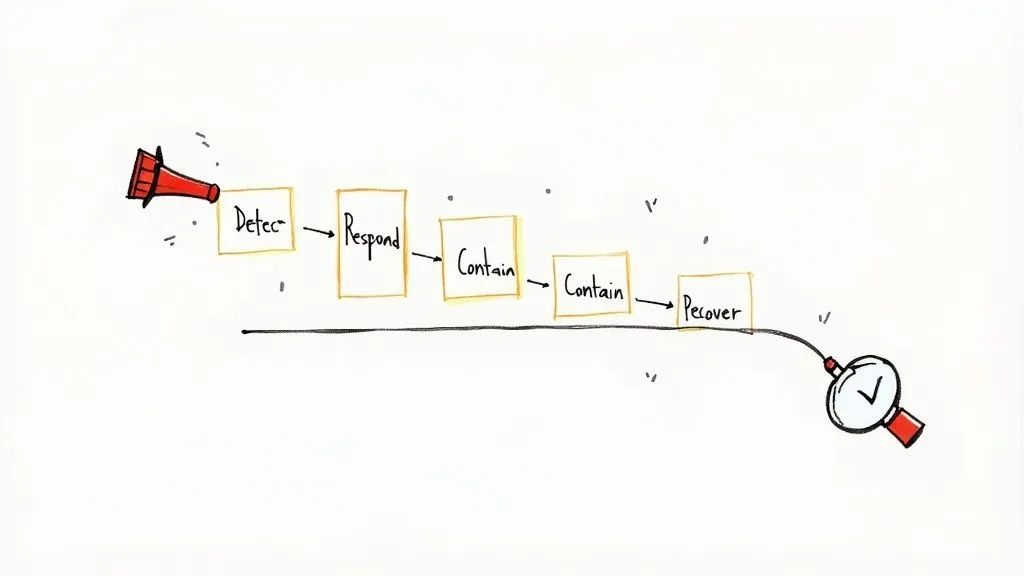
This policy defines the roles and responsibilities of the Incident Response Team (IRT), escalation paths, and communication plans. For instance, a healthcare organisation’s policy would detail immediate steps for a potential HIPAA breach, while a tech company’s plan might focus on containing a data exfiltration event. Having a documented plan is one of the most critical information security policy examples because it transforms a chaotic, high-stress situation into a managed, procedural process.
Sample Policy Clauses
- 5.1 Incident Identification: Any employee who observes an event that could be a security incident must immediately report it to the IT Help Desk or the designated security contact.
- 5.2 Incident Response Team (IRT) Activation: Upon confirmation of a critical or high-severity incident, the IRT Lead shall be notified to activate the full team and begin containment procedures.
- 5.3 Evidence Preservation: All members involved in an incident response must take necessary steps to preserve evidence. Original systems should be isolated, and forensic images should be created before any remediation actions are taken.
- 5.4 Post-Incident Review: A post-incident review meeting must be conducted within 48 hours of incident resolution to analyse the response and identify lessons learned.
Customisation and Implementation Tips
Establish a dedicated IRT with clearly defined roles before an incident occurs. Develop detailed playbooks for common scenarios like phishing, malware, and denial-of-service attacks. Conduct quarterly tabletop exercises to test your plan and ensure the team is prepared. To ensure your organisation is prepared for any eventuality, delve deeper into creating an effective security incident response plan that includes up-to-date contact lists and secure, out-of-band communication channels.
Mapping to Security Frameworks
- NIST CSF: DE.AE-2 (Incidents are detected), RS.RP-1 (Response plan is executed during or after an event)
- ISO 27001: A.16.1.7 (Information security incident management planning and preparation)
- SOC 2: CC7.3 (Incident Management)
5. Acceptable Use Policy (AUP)
An Acceptable Use Policy (AUP) is a critical document that outlines the rules and guidelines for employees and other users regarding the use of an organisation’s information technology resources. This includes computers, networks, internet access, email systems, and software. The primary goal of an AUP is to set clear expectations for user behaviour, thereby protecting the company’s assets, data, and reputation from misuse, whether intentional or accidental. It establishes a baseline for responsible conduct and informs users of the consequences of non-compliance.
This policy is a key component in mitigating risks associated with human error and malicious insider threats. For instance, a tech company’s AUP would explicitly prohibit using corporate networks for illegal activities like copyright infringement, while also defining acceptable levels of personal internet use during work hours. As one of the most user-facing information security policy examples, a well-communicated AUP helps foster a culture of security awareness and accountability across the entire organisation.
Sample Policy Clauses
- 3.1 Prohibited Uses: Company resources may not be used for transmitting offensive or harassing material, engaging in fraudulent activities, intentionally distributing malware, or violating any applicable laws or regulations.
- 3.2 Personal Use: Incidental and occasional personal use of the company’s internet and email is permitted, provided it does not interfere with job performance, consume significant resources, or violate any other policy provision.
- 3.3 Monitoring and Privacy: The company reserves the right to monitor all use of its IT resources to ensure compliance with this policy. Users should have no expectation of privacy in any information created, stored, sent, or received using company systems.
- 3.4 Social Media: Employees must not represent personal opinions as those of the company on social media. Disclosing confidential or proprietary company information is strictly prohibited.
Customisation and Implementation Tips
To ensure effectiveness, your AUP must be written in clear, simple language that all employees can understand, avoiding overly technical jargon. Require all new and existing employees to read and formally acknowledge the policy, documenting their acceptance. It is vital to communicate monitoring practices transparently to manage privacy expectations. The policy should be reviewed at least annually to address new technologies like generative AI and evolving threats, with consistent and fair enforcement for all violations.
Mapping to Security Frameworks
- NIST CSF: PR.AC-4 (Access permissions are managed, incorporating the principles of least privilege and separation of duties), PR.IP-1 (A baseline of policies and regulations that govern the protection of information is established)
- ISO 27001: A.8.1.3 (Acceptable use of information and other associated assets)
- SOC 2: CC6.8 (The entity implements controls to prevent or detect and act upon the unauthorised use of, or access to, its logical and physical assets)
6. Bring Your Own Device (BYOD) Policy
A Bring Your Own Device (BYOD) Policy establishes the rules and security requirements for employees using their personal devices, such as smartphones, laptops, and tablets, to access corporate data, networks, and applications. This policy is critical for balancing the flexibility and satisfaction of employees with the organisation’s need to protect sensitive information from unauthorised access and data breaches. It defines the necessary security controls and procedures to manage risks associated with personal devices.
Without a formal BYOD policy, organisations open themselves up to significant security vulnerabilities, including data leakage, malware infections, and compliance violations. For instance, a technology firm might allow developers to use their personal laptops but will mandate the use of a Mobile Device Management (MDM) solution to enforce encryption and separate corporate data into a secure container. This approach makes it one of the most practical information security policy examples for modern, flexible workplaces.
Sample Policy Clauses
- 5.1 Device Eligibility and Registration: All personal devices used for company business must be registered with the IT department and meet minimum security requirements, including a supported operating system and the installation of company-mandated security software.
- 5.2 Security Controls: All devices accessing company data must have a strong passcode or biometric lock enabled, full-disk encryption activated, and company-approved antivirus/anti-malware software installed and kept up-to-date.
- 5.3 Acceptable Use: Personal devices must not be jailbroken or rooted. The installation of applications from untrusted sources is strictly prohibited on any device used to access company resources.
- 5.4 Lost or Stolen Device Procedure: Employees must immediately report any lost or stolen device to the IT security team. The company reserves the right to remotely wipe corporate data from the device to prevent unauthorised access.
Customisation and Implementation Tips
Begin by implementing a Mobile Device Management (MDM) or a Unified Endpoint Management (UEM) solution to enforce security controls centrally. Clearly define the scope of the policy, including which devices and data types are covered. Use containerisation to create a secure, isolated workspace on personal devices, separating corporate data from personal applications. It is vital to document privacy expectations clearly, specifying what data the company can and cannot monitor. Regular training on BYOD security best practices and device loss procedures is essential for all participating employees.
Mapping to Security Frameworks
- NIST CSF: PR.AC-3 (Access permissions are managed), PR.IP-1 (A baseline of security configurations is created)
- ISO 27001: A.6.2.1 (Mobile device policy), A.6.2.2 (Teleworking)
- SOC 2: CC6.1 (Logical and Physical Access Controls)
7. Remote Work Security Policy
A Remote Work Security Policy outlines the rules and procedures required to protect company data and systems when employees work outside of a traditional office environment. As remote and hybrid work models become standard, this policy is essential for mitigating the unique risks associated with home networks, personal devices, and unsecured physical locations. It establishes clear expectations for secure connectivity, device management, and data handling, ensuring that the organisation’s security posture remains strong regardless of where employees are located.
This policy is a critical component of a modern security programme, directly addressing threats like insecure Wi-Fi connections, physical device theft, and unauthorised access from shared living spaces. For example, a tech company would mandate the use of a company-managed VPN for all network access and require endpoint protection software on any device connecting to corporate resources. This makes it one of the most relevant information security policy examples today, as it formalises security controls for a distributed workforce.
Sample Policy Clauses
- 5.1 Secure Connectivity: All employees working remotely must connect to the corporate network via the company-provided Virtual Private Network (VPN). Split-tunnelling is prohibited to ensure all traffic is inspected.
- 5.2 Home Network Security: Employees are responsible for securing their home wireless networks with a strong password (WPA2 or higher) and changing the default administrator credentials on their router.
- 5.3 Physical Security: Company-owned devices must be secured when unattended. Employees must take reasonable steps to prevent unauthorised viewing of their screen, especially in public spaces.
Customisation and Implementation Tips
To implement this policy successfully, provide employees with secure, company-managed equipment wherever possible. Mandate and deploy robust endpoint detection and response (EDR) software on all remote devices to monitor for threats. Regular, engaging training on the specific risks of remote work, such as phishing attacks targeting home workers and the importance of screen privacy, is vital. Consider providing privacy screens for laptops and conduct periodic, non-intrusive checks to ensure home office setups meet minimum security standards.
Mapping to Security Frameworks
- NIST CSF: PR.AC-3 (Access permissions are managed and enforced)
- ISO 27001: A.6.2.1 (Mobile device policy), A.6.2.2 (Teleworking)
- SOC 2: CC6.6 (Logical and Physical Access Controls - Teleworking)
8. Third-Party & Vendor Security Policy
A Third-Party & Vendor Security Policy is an essential governance document that mitigates risks arising from the supply chain. It establishes the security requirements, due diligence processes, and ongoing monitoring standards for any external vendors, contractors, or service providers who access, process, or store organisational data. As businesses increasingly rely on third-party services, this policy ensures that partners do not become a weak link in the security posture, safeguarding sensitive information from supply chain attacks.
This policy formalises the vendor risk management lifecycle, from initial onboarding and security assessments to contract termination and data destruction. For instance, a technology company would use this policy to require its cloud hosting provider (e.g., AWS, Azure) to provide a SOC 2 Type II report, while a marketing agency handling customer data would need to sign a robust Data Processing Agreement (DPA). This is one of the most critical information security policy examples for managing external risk and ensuring partners uphold security standards equivalent to your own.
Sample Policy Clauses
- 5.1 Vendor Risk Assessment: All new vendors must undergo a security risk assessment prior to being granted access to company systems or data. The stringency of the assessment will be based on the vendor’s access level and the sensitivity of the data they will handle.
- 5.2 Contractual Requirements: All vendor contracts must include a security addendum that specifies requirements for incident notification, data protection, audit rights, and compliance with applicable regulations.
- 5.3 Continuous Monitoring: High-risk vendors shall be subject to annual reassessments to ensure ongoing compliance. The company reserves the right to terminate contracts with vendors who fail to meet security obligations.
Customisation and Implementation Tips
Begin by creating a tiered system for vendor risk, categorising them based on their access to sensitive data (e.g., High, Medium, Low). Use this tiering to define the scope of due diligence, requiring a SOC 2 report for high-risk cloud vendors but a simpler questionnaire for low-risk suppliers. Maintain a centralised vendor inventory and use scorecards to track their security performance over time. It is crucial to embed security clauses and incident notification SLAs directly into all legal contracts.
Mapping to Security Frameworks
- NIST CSF: PR.IP-12 (A process is established to formally manage the information security and privacy risks associated with third-party partners)
- ISO 27001: A.15.1.1 (Information security policy for supplier relationships)
- SOC 2: CC9.2 (Vendor Management)
9. Security Awareness and Training Policy
A Security Awareness and Training Policy formalises an organisation’s commitment to educating its workforce, transforming employees from potential security liabilities into the first line of defence. It mandates ongoing training programs designed to instil a security-first mindset and ensure everyone understands their role in protecting company assets. This policy addresses the critical human element of cybersecurity, recognising that even the most advanced technical controls can be undermined by a single uninformed action.
The policy ensures that security is a shared responsibility, moving beyond the IT department to become part of the organisational culture. For instance, a healthcare provider uses this policy to mandate annual HIPAA training, reinforcing the correct handling of patient data, while a tech firm might run monthly phishing simulations to keep staff vigilant against social engineering attacks. This is one of the most crucial information security policy examples as it directly mitigates human error, a leading cause of security breaches.
Sample Policy Clauses
- 5.1 Mandatory Participation: All employees, contractors, and relevant third parties are required to complete the company’s security awareness training program upon onboarding and annually thereafter.
- 5.2 Phishing Simulations: The company will conduct periodic, unannounced phishing simulation exercises to measure employee awareness and resilience. Participation and performance may be tracked for reporting purposes.
- 5.3 Role-Based Training: In addition to general awareness training, personnel in specific roles (e.g., developers, system administrators) shall receive specialised training relevant to their security responsibilities.
Customisation and Implementation Tips
To effectively implement this policy, make training interactive and engaging with real-world scenarios rather than passive presentations. Use gamification elements like leaderboards to foster friendly competition and provide bite-sized learning modules that fit into busy schedules. Track completion rates and phishing simulation performance to identify areas needing improvement. Crucially, update training content annually to reflect the latest threat landscape. For those starting out, a complete guide to cybersecurity training for employees can provide foundational knowledge and structure.
Mapping to Security Frameworks
- NIST CSF: PR.AT-1 (All users are informed and trained)
- ISO 27001: A.7.2.2 (Information security awareness, education and training)
- SOC 2: CC1.2 (Commitment to Competence)
10. Encryption and Data Protection Policy
An Encryption and Data Protection Policy establishes the technical standards for safeguarding sensitive information across an organisation. It mandates the use of encryption for data both at rest (when stored on devices or servers) and in transit (when moving across networks). This policy is critical for preventing unauthorised access to data in case of a physical or digital breach, ensuring that even if data is stolen, it remains unreadable and unusable.
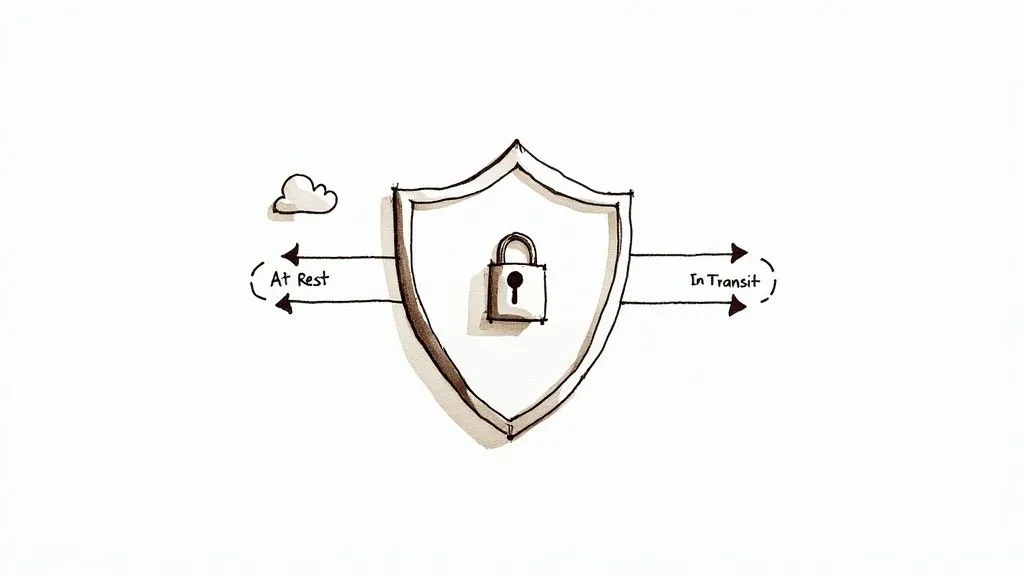
This policy directly supports compliance with regulations like GDPR and HIPAA, which require robust data protection measures. For instance, a healthcare provider would use this policy to mandate AES-256 encryption for all patient records stored in a database (at rest) and enforce TLS 1.2 or higher for all data transmitted to a partner laboratory (in transit). This makes it one of the most powerful information security policy examples for mitigating the impact of a data breach.
Sample Policy Clauses
- 5.1 Data-at-Rest Encryption: All company-issued laptops and portable media must have full-disk encryption enabled (e.g., BitLocker, FileVault). All production databases containing Confidential or Restricted data must have Transparent Data Encryption (TDE) enabled.
- 5.2 Data-in-Transit Encryption: All external data transmission of sensitive company information over public networks must be encrypted using a minimum of TLS 1.2 with strong cipher suites.
- 5.3 Key Management: Cryptographic keys must be managed through the company’s centralised Key Management System (KMS). Key rotation must occur at least annually or upon the compromise of a key.
Customisation and Implementation Tips
Begin by identifying all systems and processes that handle sensitive data to determine where encryption is most needed. Mandate strong, industry-accepted algorithms like AES-256 and secure protocols like TLS 1.2+. Implement a centralised key management solution to control the entire lifecycle of cryptographic keys, from creation to destruction. Ensure that encrypted backups are maintained and regularly test key recovery procedures to prevent data loss. Automate monitoring to ensure all relevant systems remain compliant with encryption standards.
Mapping to Security Frameworks
- NIST CSF: PR.DS-1 (Data-at-rest is protected), PR.DS-2 (Data-in-transit is protected)
- ISO 27001: A.10.1.1 (Policy on the use of cryptographic controls)
- SOC 2: CC6.1 (Logical and Physical Access Controls), CC6.7 (Transmission of data)
Comparison of 10 Information Security Policies
| Policy | 🔄 Implementation complexity | ⚡ Resources & ongoing effort | 📊 Expected outcomes | 💡 Ideal use cases | ⭐ Key advantages |
|---|---|---|---|---|---|
| Data Classification Policy | High 🔄 — multi-tier rules, system integration | Moderate–High ⚡ — governance, DLP/labels | Better data handling, prioritized protection 📊 | Regulated industries, large data estates 💡 | Enables risk-based controls; aids compliance ⭐ |
| Access Control Policy | High 🔄 — RBAC/ABAC, MFA, SoD design | High ⚡ — IAM platforms, provisioning workflows | Reduced unauthorized access; strong audit trails 📊 | Enterprise apps, privileged environments 💡 | Enforces least privilege; improves accountability ⭐ |
| Password Policy | Low–Moderate 🔄 — rules + SSO/MFA alignment | Low ⚡ — policy config, helpdesk support | Basic account protection; lower brute-force risk 📊 | All organizations; complement with MFA 💡 | Foundational control; low cost to implement ⭐ |
| Incident Response Policy | Moderate–High 🔄 — playbooks, roles, forensics | High ⚡ — dedicated team, tools, drills | Faster detection, containment and recovery 📊 | High-risk orgs, critical services, regulated sectors 💡 | Reduces MTTR; provides legal/regulatory evidence ⭐ |
| Acceptable Use Policy (AUP) | Low 🔄 — behavioral rules, clear wording | Low–Moderate ⚡ — communication, enforcement | Clear user expectations; fewer resource abuses 📊 | Organizations needing usage rules, BYOD contexts 💡 | Legal protection; relatively simple to deploy ⭐ |
| BYOD Policy | Moderate–High 🔄 — MDM, containerization, privacy rules | Moderate–High ⚡ — MDM tools, support, training | Secure personal device access; improved flexibility 📊 | Mobile-first teams, remote workers 💡 | Increases flexibility and productivity; lowers device costs ⭐ |
| Remote Work Security Policy | Moderate 🔄 — VPN, endpoint, home standards | Moderate ⚡ — VPNs, EDR, user training | Secure remote access; reduced operational risk 📊 | Distributed/hybrid workforces, remote hires 💡 | Enables secure remote work; expands talent pool ⭐ |
| Third-Party & Vendor Security Policy | High 🔄 — assessments, contracts, audits | High ⚡ — vendor tooling, legal review, audits | Lower supply-chain risk; clearer vendor obligations 📊 | Heavy vendor reliance; regulated procurement 💡 | Extends controls to vendors; improves risk visibility ⭐ |
| Security Awareness & Training Policy | Moderate 🔄 — curricula, simulations, tracking | Moderate–High ⚡ — training platforms, time investment | Fewer human errors; stronger security culture 📊 | All orgs; phishing-prone environments 💡 | Reduces human-caused incidents; measurable behavior change ⭐ |
| Encryption & Data Protection Policy | Moderate–High 🔄 — algorithms, key management, HSMs | Moderate–High ⚡ — KMS/HSM, ops, backups | Strong data confidentiality; breach impact reduction 📊 | Sensitive data storage/transit, regulated data 💡 | Protects confidentiality; demonstrates due diligence ⭐ |
Activating Your Policies: From Documentation to Defence
Throughout this guide, we have explored a comprehensive collection of information security policy examples, moving from foundational documents like Acceptable Use and Access Control to more specialised policies governing remote work and vendor management. We have delved into specific clauses, strategic customisation tips, and alignment with critical frameworks like ISO 27001 and the NIST CSF. The journey, however, does not end with a well-written document saved on a shared drive.
The true power of these policies is unlocked only when they transition from static text into an active, living component of your organisation’s security posture. A policy is not merely a compliance artefact; it is a blueprint for behaviour, a guide for decision-making, and a critical line of defence against evolving threats.
From Blueprint to Business as Usual
The most crucial takeaway is that policies must be dynamic and integrated. A world-class Incident Response Policy is useless if the team does not know it exists or has not practised the procedures. Similarly, a meticulous Data Classification Policy fails if employees cannot easily identify and handle sensitive information during their daily tasks. Activation is the bridge between intention and action.
This process involves several key pillars:
- Communication and Training: Your policies must be communicated clearly, consistently, and through various channels. Go beyond a one-time email; integrate policy awareness into onboarding, conduct regular training sessions, and create accessible summaries or FAQs.
- Operational Integration: Embed your policy requirements directly into your workflows and tools. For example, your Access Control Policy should be enforced through your Identity and Access Management (IAM) system, with automated quarterly access reviews.
- Consistent Enforcement: Policies must be applied fairly and consistently across the organisation. A culture of security is built on the understanding that the rules apply to everyone and that non-compliance has clear, predictable consequences.
- Continuous Review and Adaptation: The threat landscape, business objectives, and technological environments are in constant flux. Schedule regular reviews (at least annually) for every policy to ensure they remain relevant, effective, and aligned with your current risk profile.
Turning Policy into a Competitive Advantage
For B2B SaaS and enterprise vendors, the activation of these policies has a direct and measurable impact on the sales cycle. Today’s customers, partners, and regulators demand verifiable proof of your security posture, which often comes in the form of lengthy and detailed security questionnaires. This is where a centralised, accessible knowledge base becomes a strategic asset.
By organising the information security policy examples we have discussed into a single source of truth, you create an engine for trust and efficiency. When your policies are not just written but also systematised within a platform, you can:
- Accelerate Due Diligence: Instantly locate the exact clause or control that answers a customer’s query, drastically reducing the time sales engineers and security teams spend searching for information.
- Ensure Consistency: Provide standardised, pre-approved answers based directly on your documented policies, eliminating the risk of inconsistent or inaccurate responses.
- Demonstrate Maturity: Showcase a well-organised and mature security programme, building confidence with prospective customers and turning your compliance efforts from a cost centre into a powerful sales enabler.
Ultimately, your information security policies are the backbone of your defence strategy. They articulate your organisation’s commitment to protecting its data and systems. By actively managing, communicating, and integrating these documents, you move beyond mere compliance and cultivate a resilient security culture that protects your business, reassures your customers, and fuels your growth.
